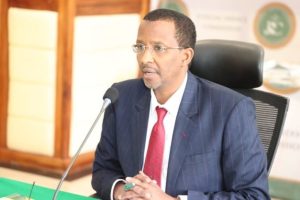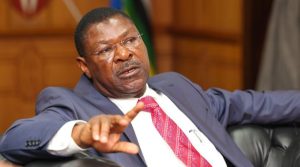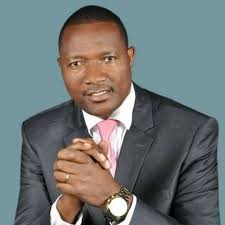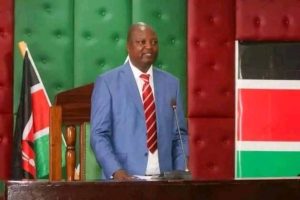
Governor Sakaja’s Strategy to Address Water Scarcity in Nairobi
Nairobi residents will soon benefit from an extra 140 million liters of water thanks to the innovative Northern Water Collection Tunnel project led by Governor Johnson Sakaja. This initiative aims to address the water scarcity issue in the city.
During his visit to Murang’a County on Wednesday, Sakaja mentioned that the project’s completion phase was near. He assured that engineers are currently performing the final quality and content tests on the water before it gets released into Nairobi’s distribution network.
The moment for conversation has passed. Nairobi residents were assured of regular access to clean water, with a promise of increased frequency for those who were previously receiving it only once a week.
This project holds significant importance as we are proactively preparing to address the needs of our expanding populace.
The daily water consumption in Nairobi is estimated to be around 900 million liters, which is sufficient for the city’s seven million inhabitants during the day and five million at night. Presently, the supply falls short at 525 million liters per day.
Acknowledging the pressing need for increased water supply in the capital city, the governor highlighted that this new initiative would help ease the water scarcity experienced by numerous residents in Nairobi neighborhoods.
The Managing Director of the Nairobi Water and Sewerage Company (NWSC), Engineer Nahashon Muguna, who attended the meeting, verified that certain areas of Nairobi had begun to see the positive impact of the newly constructed tunnel.
Muguna expressed gratitude, stating that thanks to the hard work of our committed partners and team, we are prepared to provide the 140 million liters.
Sakaja expressed his gratitude towards all parties who contributed to the success of the project, acknowledging the National Government, as well as the administrations of both Kiambu and Murang’a counties.
We appreciate President Ruto’s dedication to this project, as well as the assistance from the surrounding counties. He expressed that we will carry on collaborating as we move forward to phase two, focusing on meeting Nairobi’s water requirements more comprehensively.
This significant measure will not only alleviate water scarcity for millions of Nairobi residents but also expedite infrastructural development initiatives in the city.
NWSC confirmed in a statement that despite heavy rains in Nairobi in March this year, there is a water shortage. They pointed out that only four water sources supply water in the country: Kikuyu Springs, Ruiru, Sasumua, and Thika Dams.
The combined daily production capacity of these water sources is 440 million, 61 million, 20 million, and 4 million liters, respectively.
The amount of water available for the City is restricted to the maximum production capacity of our system. This implies that the water supply will stay consistent even when our dams are overflowing. The statement highlighted that we are unable to surpass the current production capacity in place.
Pepe TV is a vibrant broadcasting network dedicated to bringing you the best in global entertainment, news, and culture. We strive to deliver diverse content that keeps you informed, entertained, and connected to the world around you.
Copyright © 2024 All Rights Reserved






